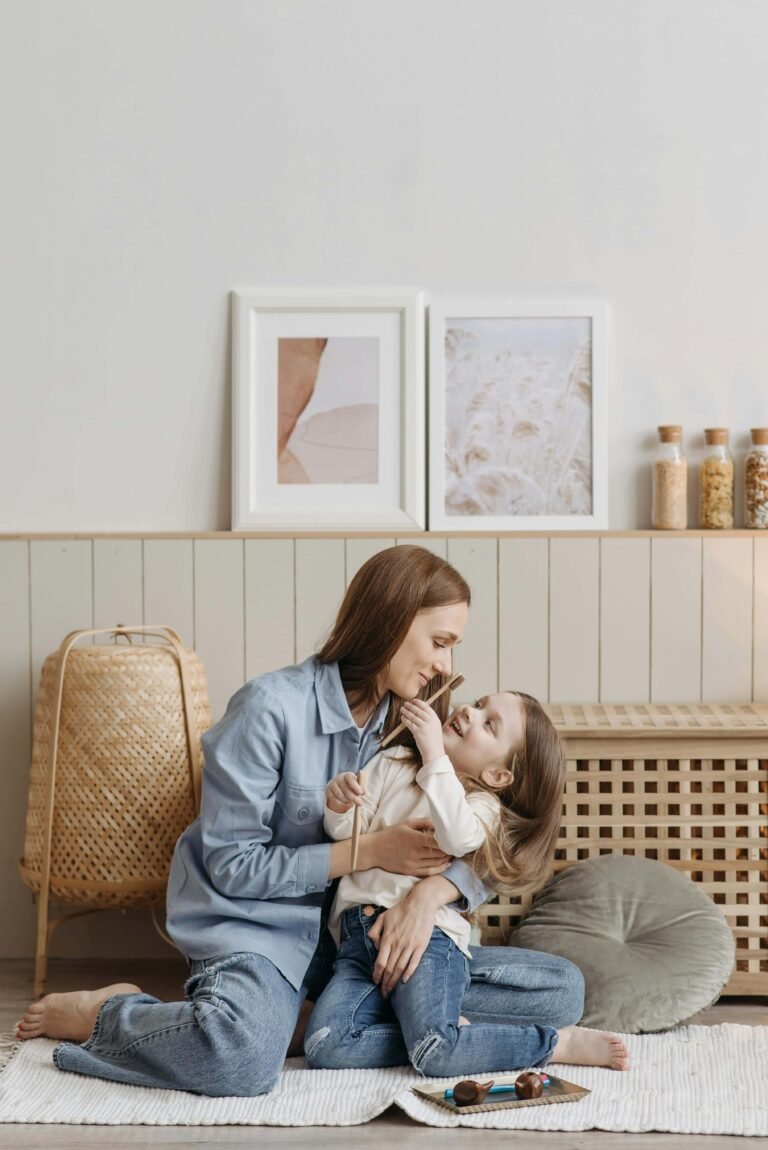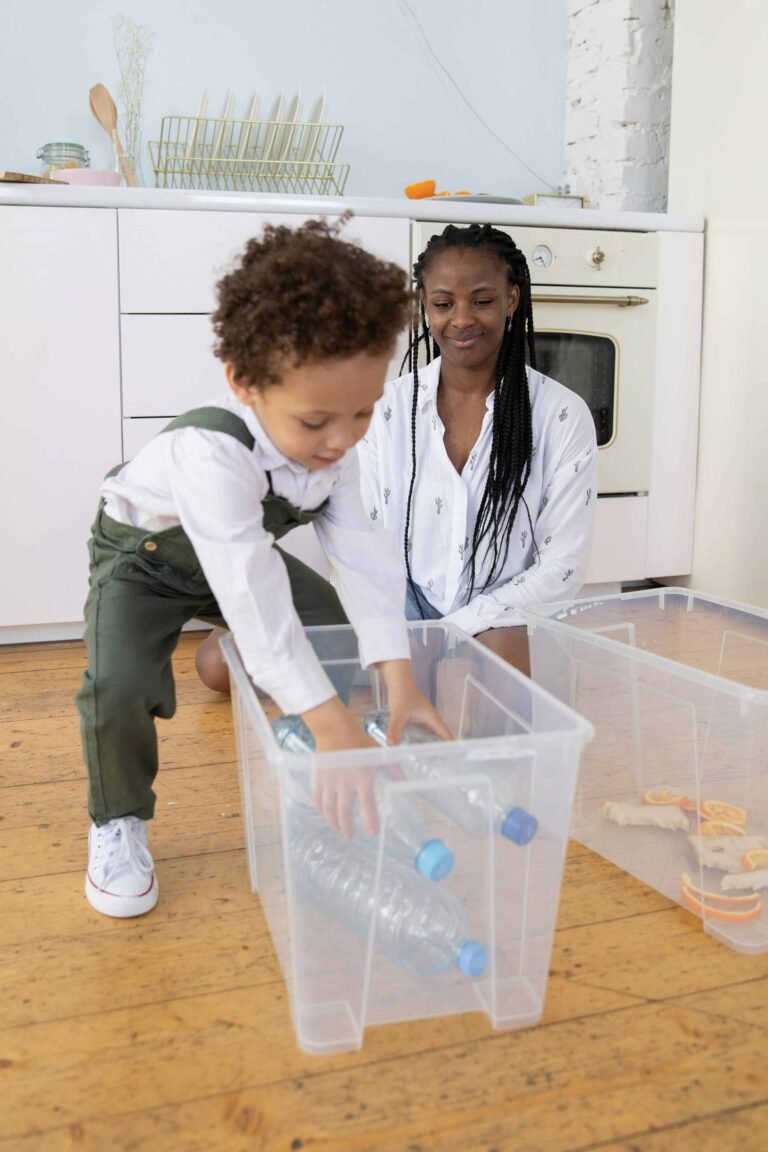Hey there, Mama. Let’s talk about those moments when your toddler is coloring on the walls (again), or your tween is rolling their eyes for the tenth time today. On days like these, staying calm can feel like an uphill climb—especially if you’re running on too little sleep and too much coffee. But guess what? There’s a gentler way to guide our kids when their behavior goes off track.
Positive discipline is about teaching kids how to respect themselves and others without turning our homes into a never-ending lecture hall. It’s not about ignoring problems or letting them off the hook; it’s about using kindness and clear boundaries to show them how to make better choices. Because at the end of the day, we want them to grow into strong, thoughtful humans who understand that respect goes both ways.
So before you lose your cool and start counting down the hours until bedtime, hang in there. We’re going to chat about strategies that might help everyone feel a little more balanced—and maybe even give you a few moments of peace while sipping that second (or third) cup of coffee.
What Positive Discipline Isn’t (Spoiler: It’s Not Permissive Parenting)
First, let’s clear the air. Positive discipline isn’t:
- Letting kids run wild without consequences.
- Ignoring bad behavior.
- Being a “pushover” parent.
Instead, it’s about teaching kids why certain actions matter and helping them develop self-control. Think of it like coaching instead of refereeing.
Guiding Principles of Positive Discipline
1. Kindness Paired with Firmness
We don’t want to spend every day sounding like a drill sergeant. But at the same time, kids thrive on rules—they need to know what’s okay and what’s not. Being kind yet firm means you can say, “I know you really want to keep playing, but it’s time to turn off the TV,” without having to raise your voice.
- Example: “I understand you want more TV time, but our family rule is one show per day. Let’s find another fun activity to do together.”
Children learn boundaries faster when we keep our cool and maintain consistency.
2. Understanding the Why Behind Behavior
Let’s be honest: sometimes kids have meltdowns, and it’s not always obvious why. They might be tired, hungry, or just feeling overwhelmed. Positive discipline encourages us to pause and look a little closer.
- Possible Approach: If your toddler yells at their sibling, take a moment before reacting. Gently say, “You seem upset. Can you tell me what happened?” Once they realize you’re listening, they’re more likely to open up about what’s really going on.
3. Consistency is Key
Sticking to rules can be easier said than done when you’ve got a million errands and you’re running low on patience. Still, consistency gives kids a sense of security. They start to understand that consequences—good or bad—will always follow certain actions.
- Practical Tip: If bedtime is set for 8:00 p.m. on school nights, try to keep that routine even on the weekends. If you ask them to pick up toys before dinner, stick with that rule. Over time, this predictability helps everyone know what’s expected.
Positive Discipline in Action
Use Choices to Empower
Kids often act out when they feel like they have zero control. Offering choices can help them feel involved, which can defuse tension.
- Example: Instead of “Put on your shoes right now,” say, “Do you want to wear the red sneakers or the blue ones?” You’re still getting them to wear shoes, but you’re also giving them a sense of independence.
Practice Logical Consequences
When a child colors on the wall, having them help clean it teaches that actions have real outcomes. This is different from a punishment that doesn’t connect to what they actually did.
- Key Idea: The consequence fits the behavior. Drawing on the wall? Time to help wipe it off. This approach encourages accountability without harshness.
Model the Behavior You Want
Kids are keen observers. They watch how we handle stress, notice our tone, and mimic what we do. If we’re calm in tough situations—like saying “Oh no, spilled my drink! Let’s get a towel”—they learn that mistakes are part of life and can be managed without panic.
- Helpful Reminder: Everyone loses their cool sometimes. Apologizing and explaining that you’re also working on staying calm shows them that grown-ups are still learning, too.
Focus on Routines
Predictable routines can make a chaotic day feel a little smoother. It gives children a structure they can lean on, which often reduces meltdowns and whining.
- Ideas for Routines:
- Morning: Wake up, brush teeth, get dressed, eat breakfast.
- After School: Hang up coat, have a quick snack, do homework, then free time.
- Evening: Dinner, some family downtime, bath, bedtime story, lights out.
Balancing Your Own Well-Being
A quick reality check: you can’t give what you don’t have. Positive discipline works best if you’re not running on empty.
- Ask for Help: Call a friend or family member if you’re feeling overwhelmed. Asking for backup isn’t a weakness; it’s a relief valve.
- Take Small Breaks: Even a few minutes to yourself can feel like a mini-vacation. Brew some tea, take a deep breath, or walk around the block if you can.
- Be Kind to Yourself: Nobody nails this every single day. We all lose our temper. If it happens, talk it out and try to repair the moment. Then brush it off and keep going.
Challenges and Joys Along the Way
Kids bring laughter, mess, tears, and heart-bursting pride—sometimes all in the same day. Positive discipline won’t wipe out every tantrum or sibling fight, but it sets a more stable foundation for those tricky moments.
- Challenge: Holding your ground when you’re running on three hours of sleep.
- Joy: Watching your child calmly explain their feelings to you because they trust you’ll listen.
Both the highs and lows matter. Each moment shapes the way your family connects and grows together.
Final Takeaway: It’s a Marathon, Not a Sprint
Positive discipline isn’t a quick fix. It’s a slow, steady investment in your child’s emotional toolkit. Some techniques will click; others won’t. Tweak them to fit your family’s vibe. And on the days it feels impossible? Text a mom friend, eat the chocolate, and try again tomorrow. You’ve got this.




